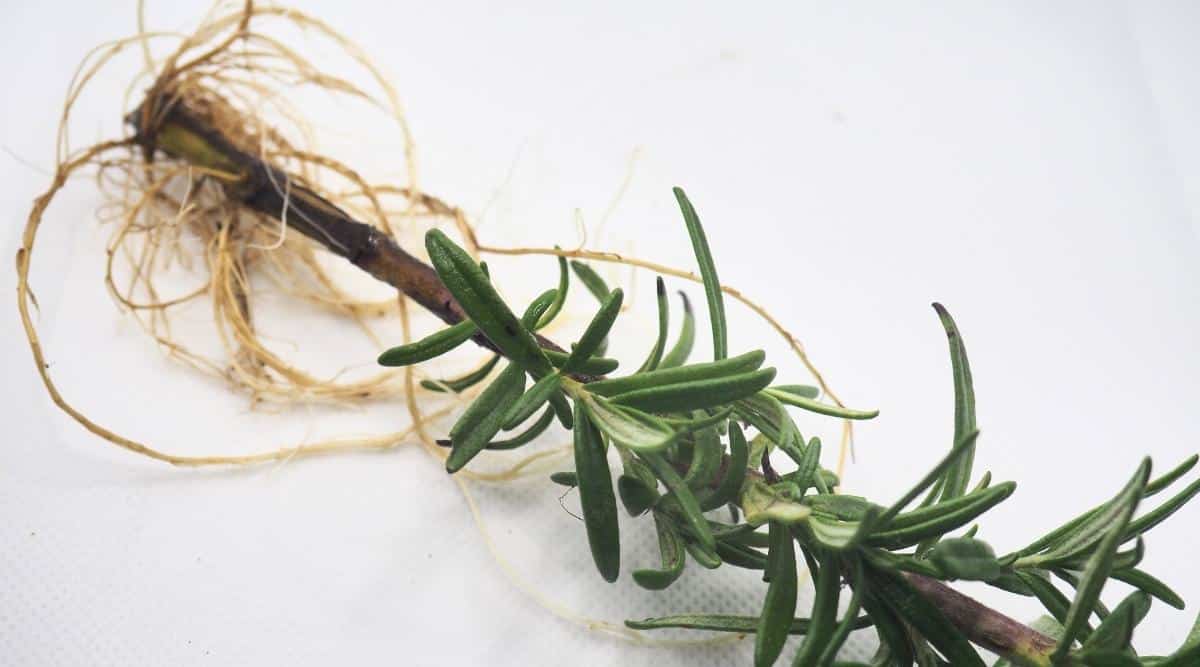Home>Gardening News and Trends>Gardening Trends>Why Do Plants Exude Carbohydrates Out Of Their Roots To Feed Soil Organisms


Gardening Trends
Why Do Plants Exude Carbohydrates Out Of Their Roots To Feed Soil Organisms
Published: February 4, 2024
Discover the latest gardening trends and learn why plants release carbohydrates from their roots to nourish soil organisms.
(Many of the links in this article redirect to a specific reviewed product. Your purchase of these products through affiliate links helps to generate commission for Chicagolandgardening.com, at no extra cost. Learn more)
Table of Contents
Introduction
Welcome to the fascinating world of plant physiology! Whether you’re a seasoned gardener, an avid botanist, or simply have a curious mind, understanding how plants interact with their environment is a captivating endeavor. One intriguing aspect of plant biology is the phenomenon of carbohydrate exudation from plant roots to feed soil organisms. This process plays a vital role in the intricate web of interactions within the soil ecosystem.
Carbohydrate exudation refers to the release of sugars, organic acids, and other carbon compounds from the roots of plants into the surrounding soil. This exudation serves as a means of communication, energy supply, and nutrient exchange between plants and the diverse array of microorganisms that inhabit the soil. While plants rely on photosynthesis to produce their own energy, they also utilize carbohydrate exudates to establish mutually beneficial relationships with soil organisms.
The purpose of this article is to explore the significance of carbohydrate exudation for plants and soil organisms, highlight the nutritional benefits of these exudates, discuss the interactions that occur within the soil ecosystem, and examine the factors that influence carbohydrate exudation. Additionally, we will examine the implications of carbohydrate exudation for agroecosystems and sustainable agriculture.
By delving into the fascinating world of carbohydrate exudation, we gain a deeper understanding of the interconnectedness and interdependence of plants and their environment. So, let’s embark on this journey to uncover the secrets behind why plants exude carbohydrates out of their roots to feed soil organisms!
Definition of Exudation
Before we dive into the intricacies of carbohydrate exudation, let’s start by understanding what exudation is. In the context of plant biology, exudation refers to the process in which substances are released or secreted from specific plant tissues, such as roots, leaves, or glands.
When it comes to carbohydrate exudation, it specifically refers to the release of sugars, organic acids, and other carbon compounds from the roots of plants into the surrounding soil. These compounds are excreted through specialized structures known as root hairs, which are responsible for the absorption of water and nutrients from the soil.
Carbohydrate exudates are rich in energy and serve as important resources for soil organisms, including bacteria, fungi, and other microorganisms. The exudates can include sugars like glucose, fructose, and sucrose, as well as organic acids like citric acid and malic acid. These compounds provide a readily available source of carbon that supports the growth and metabolism of microorganisms in the soil.
It is important to note that carbohydrate exudation is not a constant process but rather a dynamic one influenced by various factors. The exudation rates can vary depending on plant species, soil conditions, and environmental factors. Additionally, the composition of the exudates can also vary, which may impact the interactions between plants and soil organisms.
To summarize, carbohydrate exudation is the release of sugars, organic acids, and other carbon compounds from plant roots into the soil. These exudates serve as a source of energy and nutrients for soil organisms, fostering a symbiotic relationship between plants and the microbial community in the soil.
Role of Carbohydrate Exudation in Plants
Carbohydrate exudation plays a crucial role in plant physiology and serves several important functions. By releasing sugars and organic acids into the soil, plants are able to interact with and manipulate their environment in fascinating ways.
One vital function of carbohydrate exudation is the establishment and maintenance of mutually beneficial relationships between plants and soil organisms. Plants release exudates as a way to attract and support a diverse array of microorganisms in the rhizosphere, which is the zone of soil directly influenced by the presence of plant roots.
These microorganisms, including bacteria, fungi, and protozoa, form symbiotic associations with plants by aiding in nutrient uptake, protecting against pathogens, and enhancing overall plant health. In return, plants provide the necessary carbon compounds and energy sources through carbohydrate exudation, creating a symbiotic exchange that benefits both parties involved.
Carbohydrate exudation also has a direct influence on soil structure and fertility. The release of organic acids by plant roots can modify the pH levels in the rhizosphere, promoting the solubility and availability of essential nutrients. Additionally, the exudates can enhance soil aggregation and improve water-holding capacity, which contributes to the overall health and productivity of plants.
Furthermore, carbohydrate exudation plays a role in allelopathy, which is the phenomenon where plants release chemicals to inhibit the growth and establishment of neighboring plants. Certain plants release allelopathic compounds through carbohydrate exudation as a competitive strategy to gain a competitive advantage in their environment.
In summary, the role of carbohydrate exudation in plants is multi-faceted. It facilitates symbiotic relationships with soil organisms, influences soil structure and fertility, and can act as a competitive mechanism. This remarkable process highlights the sophisticated strategies employed by plants to thrive in their environment and underscores the interdependence of plants and soil organisms.
Nutritional Benefits of Carbohydrate Exudates for Soil Organisms
The release of carbohydrate exudates by plants provides a nutrient-rich food source for soil organisms, playing a crucial role in sustaining the diverse microbial community in the soil. These exudates offer a wide range of nutritional benefits that support the growth, metabolism, and ecological functioning of soil organisms.
Carbohydrate exudates, rich in sugars, organic acids, and carbon compounds, serve as an energy source for soil microorganisms. Sugars such as glucose, fructose, and sucrose are readily assimilated by microorganisms as a primary source of carbon and energy. These sugars fuel the metabolic processes and growth of bacteria, fungi, and other microorganisms, allowing them to thrive and carry out essential functions in the soil ecosystem.
Moreover, the organic acids present in carbohydrate exudates, such as citric acid and malic acid, provide an additional nutritional benefit. These acids, released by plant roots into the soil, contribute to the solubilization and availability of essential nutrients, making them more accessible for uptake by soil organisms.
Carbohydrate exudation also promotes the establishment of beneficial microbial associations with plants. Some plants form mutually beneficial relationships with nitrogen-fixing bacteria, such as rhizobia, which convert atmospheric nitrogen into a usable form for plants. The exudation of carbohydrates by the plant roots attracts these nitrogen-fixing bacteria, facilitating the exchange of nutrients between the plant and the bacteria.
Furthermore, carbohydrate exudates enhance microbial diversity in the soil. The diverse range of compounds released by different plant species leads to a rich and varied microbial community. This diversity is important for maintaining a balanced and resilient soil ecosystem, as different microorganisms perform various functions, such as nutrient cycling, disease suppression, and soil structure maintenance.
In summary, carbohydrate exudates serve as a valuable and nutritious food source for soil organisms. The sugars and organic acids within these exudates provide energy, promote nutrient availability, and foster beneficial interactions between plants and microbes. These nutritional benefits contribute to the overall health and functioning of the soil ecosystem, ultimately supporting plant growth and ecosystem sustainability.
Interactions Between Plants and Soil Organisms
The interactions between plants and soil organisms are crucial for the health and productivity of both parties. Through a complex web of relationships, plants and soil organisms engage in symbiotic, mutualistic, and competitive interactions that shape the functioning of the soil ecosystem.
Symbiotic interactions are fundamental to the relationships between plants and certain soil organisms. One of the most well-known symbiotic associations is the mycorrhizal symbiosis, where plants form a mutually beneficial relationship with certain species of fungi. The plants provide carbohydrates through exudation to the fungi, and in return, the fungi improve nutrient uptake, enhance plant growth, and confer resistance to biotic and abiotic stresses.
Another crucial symbiotic association is the nitrogen-fixing symbiosis between leguminous plants and nitrogen-fixing bacteria. These bacteria convert atmospheric nitrogen into a form usable by plants, providing a key nutrient source. In exchange, the plants supply the bacteria with carbohydrates through exudation, supporting their growth and nitrogen-fixing abilities.
Mutualistic interactions between plants and soil organisms go beyond symbiosis. They encompass a wide range of interactions where both parties benefit. For example, plants release carbohydrate exudates that attract beneficial soil bacteria that suppress plant pathogens, promoting plant health. In return, the bacteria are provided with a nutrient-rich environment and receive protection from the plant.
Additionally, soil organisms play a crucial role in the decomposition and nutrient cycling processes. Decomposer organisms, such as bacteria and fungi, break down complex organic matter into simpler forms, releasing nutrients that become available for plant uptake. This cycling of nutrients between plants and soil organisms is essential for sustaining soil fertility and supporting plant growth.
However, not all interactions between plants and soil organisms are mutually beneficial. Some interactions can be competitive, where plants release chemical compounds through carbohydrate exudation to inhibit the growth and establishment of neighboring plants. This allelopathy is a competitive strategy employed by certain plants to gain a competitive advantage in their environment.
The intricate web of interactions between plants and soil organisms highlights the complexity of the soil ecosystem. Through various symbiotic, mutualistic, and competitive interactions, plants and soil organisms shape soil fertility, nutrient cycling, pathogen suppression, and overall ecosystem health. Understanding these interactions is crucial for fostering sustainable agricultural practices, optimizing plant growth, and preserving soil health.
Factors Affecting Carbohydrate Exudation
The process of carbohydrate exudation from plant roots is influenced by various factors, both intrinsic and extrinsic. Understanding these factors is key to comprehending the dynamics and variability of this important physiological process.
One intrinsic factor that affects carbohydrate exudation is plant species. Different plant species exhibit varying rates and patterns of exudation. For example, some plants are known to exude greater quantities of carbohydrates, while others may exude specific types of compounds that support certain microbial communities. This species-specific variation in exudation can impact the composition and functioning of the soil microbial community.
Additionally, plant age and developmental stage can affect carbohydrate exudation. Younger plants tend to exude more carbohydrates through their root systems compared to mature plants. As a plant grows and develops, the exudation patterns may change, potentially influenced by the plant’s physiological needs or environmental cues.
External factors such as soil conditions also play a significant role in carbohydrate exudation. Soil fertility, nutrient availability, and moisture levels can impact exudation rates. In nutrient-poor or water-stressed environments, plants may increase exudation to attract soil organisms that can aid in nutrient acquisition or enhance water availability through improved soil structure.
Environmental factors, including temperature, light, and moisture fluctuations, can also influence exudation. For instance, higher temperatures can stimulate exudation rates, potentially as a response to increased metabolic activities in the plant. Light availability can affect photosynthesis, which in turn impacts the production and exudation of carbohydrates.
Plant-microbe interactions can shape the exudation patterns as well. Beneficial associations with specific microorganisms can enhance exudation rates, as plants alter their exudate composition to attract and support beneficial microbes. Conversely, pathogen attack or stress may trigger changes in exudation to defend against or mitigate the damage caused by pathogens or environmental stressors.
Lastly, genetic factors and plant genetic diversity also influence carbohydrate exudation. Different genotypes within a plant species may exhibit variations in exudation patterns and compositions. This genetic variability can lead to differences in plant-microbe interactions and ecosystem functioning, highlighting the importance of preserving genetic diversity for healthy and resilient ecosystems.
In summary, carbohydrate exudation is influenced by a combination of intrinsic and extrinsic factors, including plant species, age, soil conditions, environmental factors, plant-microbe interactions, and genetic variability. Understanding these factors and their impacts on exudation patterns is essential for optimizing plant-microbe interactions, ecosystem functioning, and sustainable agricultural practices.
Implications for Agroecosystems and Sustainable Agriculture
The insights into carbohydrate exudation and its interactions with soil organisms have significant implications for agroecosystems and sustainable agriculture. Harnessing the potential of carbohydrate exudation can lead to more efficient and environmentally friendly farming practices.
One important implication is the potential for enhancing nutrient availability and uptake in agroecosystems. By understanding the factors that influence carbohydrate exudation, farmers can optimize soil conditions and management practices to encourage root exudation and support beneficial microbial communities. This can improve nutrient cycling, reduce the need for synthetic fertilizers, and promote more sustainable nutrient management strategies.
Carbohydrate exudation also offers the opportunity to enhance soil health and structure. The presence of exudates can stimulate soil microbial activity and enhance the development of soil aggregates, improving soil water-holding capacity, nutrient retention, and overall soil fertility. This, in turn, can lead to increased productivity and resilience of crops in agroecosystems.
Another implication is the potential for disease management in agriculture. Certain exudates released by plants have been found to stimulate the growth of beneficial soil microorganisms that are antagonistic to plant pathogens. By harnessing these interactions, farmers can promote natural disease suppression and reduce reliance on synthetic pesticides, leading to more sustainable and environmentally friendly pest management approaches.
Carbohydrate exudation also has the potential to enhance plant tolerance to abiotic stresses such as drought and salinity. Through the release of specific compounds, plants can alter soil conditions and promote the growth of stress-tolerant microorganisms in the rhizosphere. These microorganisms can enhance plant stress tolerance by facilitating nutrient uptake, improving water availability, and triggering systemic responses in the plant.
Utilizing the knowledge of carbohydrate exudation can also aid in the restoration and rehabilitation of degraded soils. By selecting plant species and cultivars that are known to exude specific compounds and foster beneficial microbial communities, farmers and land managers can accelerate the regeneration of degraded soils and enhance their productivity and resilience.
In summary, understanding the implications of carbohydrate exudation for agroecosystems and sustainable agriculture opens up new possibilities for optimizing nutrient cycling, disease management, stress tolerance, and soil restoration. By harnessing the potential of carbohydrate exudation, farmers can move towards more sustainable and ecologically-based agricultural practices that promote long-term soil health, biodiversity, and productivity.
Conclusion
Carbohydrate exudation from plant roots to feed soil organisms is a fascinating and intricate process that holds immense significance in the world of plant biology and soil ecology. Through the release of sugars, organic acids, and carbon compounds, plants establish symbiotic relationships, improve nutrient availability, and shape the dynamics of the soil ecosystem.
We have explored the various aspects of carbohydrate exudation, including its definition, the role it plays in plant physiology and soil organism nutrition, the interactions between plants and soil organisms, the factors that influence exudation, and the implications for agroecosystems and sustainable agriculture.
This exploration has revealed the interconnectedness and interdependence of plants and soil organisms. Carbohydrate exudation serves as a means of communication, energy supply, and nutrient exchange, creating a symbiotic relationship between plants and soil microorganisms. This relationship enhances soil fertility, nutrient cycling, disease suppression, and overall ecosystem health.
Understanding the factors that impact carbohydrate exudation, such as plant species, soil conditions, environmental factors, and genetic variability, allows us to optimize plant-microbe interactions and develop sustainable agricultural practices. By harnessing the potential of carbohydrate exudation, we can enhance nutrient availability, support soil health and structure, manage plant diseases, improve stress tolerance, and restore degraded soils.
The study of carbohydrate exudation opens up new avenues for sustainable and environmentally friendly farming practices. By maximizing the benefits of carbohydrate exudation, we can foster productive and resilient agroecosystems while minimizing the use of synthetic fertilizers, pesticides, and water resources.
In conclusion, the phenomenon of carbohydrate exudation exemplifies the intricate mechanisms and intricate relationships that exist within the soil ecosystem. Its study offers valuable insights into the ways in which plants interact with their environment, providing us with tools to cultivate healthy soils, enhance crop productivity, and promote sustainable agriculture for our future generations.




